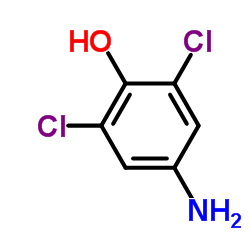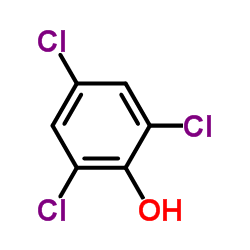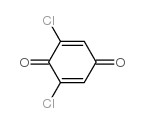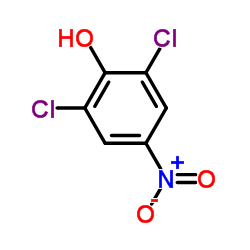101-38-2
| Name | 2,6-Dichloroquinone-4-chloroimide |
|---|---|
| Synonyms |
2,6-dichloro-4-(chloroimino)cyclohexa-2,5-dien-1-one
2,6-Dichloro-p-benzoquinone-4-chloroimine N,2,6-Trichloro-p-quinoneimine 2,6-dichloro-4-chloroiminocyclohexa-2,5-dien-1-one 2,5-Cyclohexadien-1-one, 2,6-dichloro-4-(chloroimino)- n,2,6-trichloroquinoneimine N,2,6-Trichloro-p-benzoquinone Monoimine 2,6-Dichloro-4-(chloroimino)-2,5-cyclohexadien-1-one 2,6-Dichloroquinone-4-chloroiMide MFCD00001611 2,6-Dichloro-4-(chloroimino)cyclohexa-2,5-dienone EINECS 202-937-2 |
| Description | 2,6-Dichloroquinone-4-chloroimide is a spray reagent for organic compounds. 2,6-Dichloroquinone-4-chloroimide can be used in thin-layer chromatograms. 2,6-Dichloroquinone-4-chloroimide can be used as an optical sensor for rapid detection of permethrin in treated wood[1][2]. |
|---|---|
| Related Catalog | |
| References |
| Density | 1.6±0.1 g/cm3 |
|---|---|
| Boiling Point | 262.3±50.0 °C at 760 mmHg |
| Melting Point | 65-67 °C(lit.) |
| Molecular Formula | C6H2Cl3NO |
| Molecular Weight | 210.445 |
| Flash Point | 104.3±19.3 °C |
| Exact Mass | 208.920197 |
| PSA | 29.43000 |
| LogP | 1.64 |
| Vapour Pressure | 0.0±0.5 mmHg at 25°C |
| Index of Refraction | 1.612 |
| Stability | Stable. Keep refrigerated. |
CHEMICAL IDENTIFICATION
HEALTH HAZARD DATAACUTE TOXICITY DATA
|
| Hazard Codes | E:Explosive;Xn:Harmful; |
|---|---|
| Risk Phrases | R2;R20/22;R36/37/38 |
| Safety Phrases | S15-S26-S36/37/39-S33-S16 |
| RIDADR | UN 3224 4.1 |
| WGK Germany | 3 |
| RTECS | GU5470000 |
|
~% 
101-38-2 |
| Literature: Journal of Biological Chemistry, , vol. 72, p. 659 Journal of Physical Chemistry, , vol. 31, p. 1057 |
|
~34% 
101-38-2 |
| Literature: Environmental Science and Technology, , vol. 38, # 19 p. 5022 - 5029 |
|
~32% 
101-38-2 |
| Literature: Environmental Science and Technology, , vol. 38, # 19 p. 5022 - 5029 |
|
~% 
101-38-2 |
| Literature: Trudy Inst. c. chim. Reakt., , # 16 p. 83,85 Chem. Zentralbl., , vol. 113, # II p. 397 Rev. quim. farm. Chile, , # 47 p. 7,10 Science Reports of National Tsing Hua University, Series A: Mathematical, Physical, and Engineering Sciences, , vol. 2, p. 235,238 |
|
~% 
101-38-2 |
| Literature: Justus Liebigs Annalen der Chemie, , vol. 234, p. 3 |






